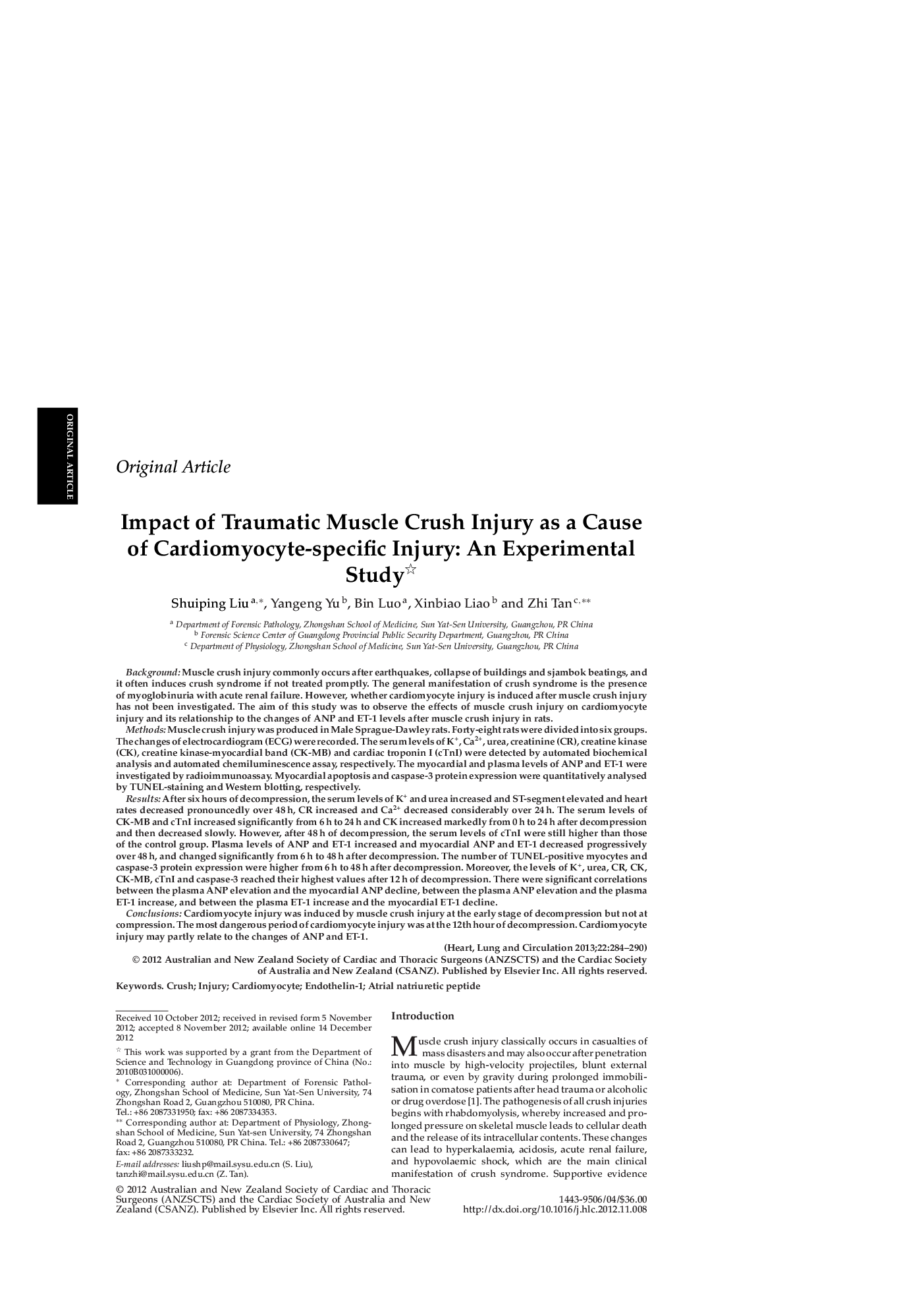| Article ID | Journal | Published Year | Pages | File Type |
|---|---|---|---|---|
| 2917992 | Heart, Lung and Circulation | 2013 | 7 Pages |
BackgroundMuscle crush injury commonly occurs after earthquakes, collapse of buildings and sjambok beatings, and it often induces crush syndrome if not treated promptly. The general manifestation of crush syndrome is the presence of myoglobinuria with acute renal failure. However, whether cardiomyocyte injury is induced after muscle crush injury has not been investigated. The aim of this study was to observe the effects of muscle crush injury on cardiomyocyte injury and its relationship to the changes of ANP and ET-1 levels after muscle crush injury in rats.MethodsMuscle crush injury was produced in Male Sprague-Dawley rats. Forty-eight rats were divided into six groups. The changes of electrocardiogram (ECG) were recorded. The serum levels of K+, Ca2+, urea, creatinine (CR), creatine kinase (CK), creatine kinase-myocardial band (CK-MB) and cardiac troponin I (cTnI) were detected by automated biochemical analysis and automated chemiluminescence assay, respectively. The myocardial and plasma levels of ANP and ET-1 were investigated by radioimmunoassay. Myocardial apoptosis and caspase-3 protein expression were quantitatively analysed by TUNEL-staining and Western blotting, respectively.ResultsAfter six hours of decompression, the serum levels of K+ and urea increased and ST-segment elevated and heart rates decreased pronouncedly over 48 h, CR increased and Ca2+ decreased considerably over 24 h. The serum levels of CK-MB and cTnI increased significantly from 6 h to 24 h and CK increased markedly from 0 h to 24 h after decompression and then decreased slowly. However, after 48 h of decompression, the serum levels of cTnI were still higher than those of the control group. Plasma levels of ANP and ET-1 increased and myocardial ANP and ET-1 decreased progressively over 48 h, and changed significantly from 6 h to 48 h after decompression. The number of TUNEL-positive myocytes and caspase-3 protein expression were higher from 6 h to 48 h after decompression. Moreover, the levels of K+, urea, CR, CK, CK-MB, cTnI and caspase-3 reached their highest values after 12 h of decompression. There were significant correlations between the plasma ANP elevation and the myocardial ANP decline, between the plasma ANP elevation and the plasma ET-1 increase, and between the plasma ET-1 increase and the myocardial ET-1 decline.ConclusionsCardiomyocyte injury was induced by muscle crush injury at the early stage of decompression but not at compression. The most dangerous period of cardiomyocyte injury was at the 12th hour of decompression. Cardiomyocyte injury may partly relate to the changes of ANP and ET-1.
